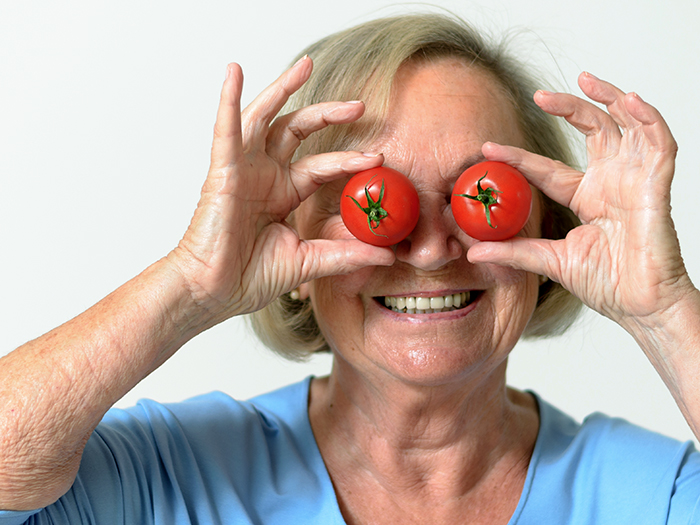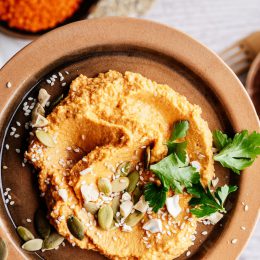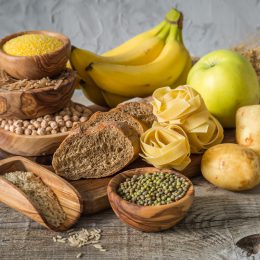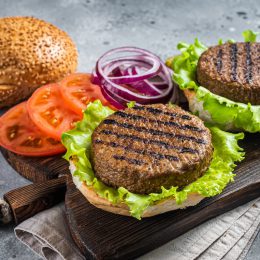QUIZ: Do You Have a Healthy Relationship with Food?
Here’s how to assess your eating habits, adjust your attitude, and live more happily.
 Food plays a powerful role in our lives. Yes, we need it to survive. But it’s also center stage when we want to celebrate, soothe, or impress.
Food plays a powerful role in our lives. Yes, we need it to survive. But it’s also center stage when we want to celebrate, soothe, or impress.
Because it plays such a big role, it’s worth asking the question: Do you have a healthy, happy relationship with food? Or one that’s complicated, maybe even detrimental?
It’s never too late to examine and improve your relationship with food, says Nina Savelle-Rocklin, Psy.D., an eating disorder specialist and author of The Binge Cure: 7 Steps to Outsmart Emotional Eating.
Maybe you’re a chronic dieter, or don’t trust yourself around tempting foods, she says. Perhaps you’ve always followed uncompromising food rules that have left you frustrated: “These foods are good, and these are bad. Eat this, and you’ll be thin. Eat that, and you’ll be fat.”
To help you sort it all out, we created this quick quiz, designed with the help of a medical doctor, a health coach, and Savelle-Rocklin.
Take the Quiz
For each question, write your answer—A, B, or C—on a piece of paper.
1. On most days, you think of food…
- a. When you’re hungry.
- b. When you’re hungry or anxious.
- c. Constantly.
2. A typical dinner is…
- a. A simple meal of nourishing foods.
- b. Whatever I can find in the fridge.
- c. Some form of takeout.
3. Food is…
- a. Something to enjoy and share with others.
- b. You have to eat to live, right?
- c. My refuge. I rarely eat with others.
4. We all overeat on occasion. When it happens, you…
- a. Shrug it off knowing it was just one big meal.
- b. Double up on SilverSneakers classes the next day.
- c. Feel overwhelmed with embarrassment and shame.
5. When a donut craving strikes, you…
- a. Don’t usually give in, but enjoy every bite when you do.
- b. Force yourself to stop thinking about it.
- c. Buy two and shovel them down in private.
6. When having dinner with friends, you…
- a. Order one dessert for the table to share.
- b. Take the opportunity to talk about the evils of sugar.
- c. Pass on dessert, but dive into your private sweets stash at home.
7. After a tough day, you…
- a. Go for a long walk or call up a friend.
- b. Push down your feelings and binge-watch HGTV.
- c. Numb the pain with a bowl of ice cream.
8. You read about a new diet trend and think…
- a. Not for me. I believe “everything in moderation” is best.
- b. It’s worth a shot, but I doubt it will work.
- c. Sign me up!
9. The world’s best lasagna is on the menu. You…
- a. Order it, of course! But immediately put half in a to-go box.
- b. Eat almost all of it, even though you start to feel guilty.
- c. Eat every last bite, even though you felt full six bites ago.
Tally Time: What Do Your Answers Reveal?
Count how many A’s, B’s, and C’s you selected. Then use your answers to reset any misfiring eating cues and find the path toward a winning attitude about food.
Mostly A’s: You’re in a Good Spot
You look forward to a great meal and don’t beat yourself up if you went back for seconds of your friend’s legendary casserole.
And when a tough day rolls around, you’ve learned that a short walk trumps diving your spoon into a pint of ice cream—every time.
Still, there’s always room for improvement, says Frances Murchison, a health coach and author of Heal Your Whole Body: The 12-Day Power Plan to Flush Toxins, Balance Hormones, and Reset Your Body’s Most Essential Organ.
Even though you may not be overeating or eating out of guilt, it’s important to make sure you’re eating a variety of foods in order to meet your nutritional needs, she says.
Set a goal of including a vegetable with every meal. That will help you take in more vitamins and nutrients, as well as hit your daily fiber targets. Get inspired with this list of 18 foods with more fiber than oatmeal.
And remember that it’s important to eat enough protein to hold on to your muscle mass as you get older. Along with the obvious meat options, great sources of protein include beans, lentils, fish, eggs, and Greek yogurt. For more tips, check out our guide to how much protein you need each day.
Mostly B’s: You Have a Love-Hate Relationship with Food
Food may not be on your mind 24/7, but it’s up there.
Rather than focusing on calories or thinking of food as good or bad, Murchison recommends taking a more mindful approach to eating. She explains that your body is designed to let you know when it does and doesn’t want food. But those cues can be easy to miss.
“Be willing to pause and honor the food in front of you,” she says. “Think about how it got there, enjoy the delicious smells, and savor every bite.”
Another key step in the right direction is to have an actual eating plan. It doesn’t have to be anything complicated or fancy. Start with the basics: a shopping list for your weekly grocery run so you’re covered with all the main food groups.
And just as you schedule your SilverSneakers classes or other workouts, put a little planning into your meals for the days ahead. That way you’re not caught off guard—and starving—with nothing ready to go.
“Think about what you’d like to make, and plan and prep with a sense of enjoyment,” Murchison says.
Subscribe to our newsletter
It's quick and easy. You could be one of the 13 million people who are eligible.
Already a member? Click to discover our 15,000+ participating locations.
Follow Us
Get started with this seven-day meal plan that uses 10 ingredients or this vegetarian meal plan for a week.
Mostly C’s: Time for an Intervention
Sounds like you really enjoy food and want to be healthy, but it might be a good idea to look carefully at some of your eating habits.
One red flag: eating in private and using food to soothe your negative feelings.
“When we’re bored or lonely or angry, food can become our best friend,” Murchison says. “It works because it changes the chemicals in the brain. Chocolate, for example, raises our endorphins, so we naturally feel better for a while. Sometimes, food is definitely like a drug.”
People who fall into this group may need the help and support of their doctor or a registered dietitian, says Susan Besser, M.D., a primary care physician and obesity expert at Mercy Medical Center in Baltimore.
“Have an honest conversation with your health care provider, or find a counselor who specializes in eating issues,” Dr. Besser says.
One thing that she recommends to her patients is keeping a food journal. After every meal or snack, jot down what you ate and how you were feeling.
“Often, our eating is so automatic that we don’t even realize what we’re doing,” Dr. Besser says. Having a paper trail will help you spot patterns that are getting in the way of a healthy relationship with food.
Self-understanding is a great first step, Savelle-Rocklin agrees.
“If you find yourself eating in an unhealthy way, try to stop and think,” Savelle-Rocklin says. “Be reflective, not reactive. Try not to berate yourself. Instead, ask yourself what was going on in your life that made you eat the way you did.”
Healthy eating isn’t just about hitting certain nutrition goals, Dr. Besser says. It’s also feeling good about what you’re eating.
Check Your SilverSneakers Eligibility Instantly
SilverSneakers members can go to thousands of gyms and fitness locations across the nation, plus take exercise classes designed for seniors and led by supportive instructors. If you have a Medicare Plan, it may include SilverSneakers—at no additional cost. Check your eligibility instantly here.
Already a member? Get your SilverSneakers member ID and exclusive fitness content by logging in to or creating your online account here.




